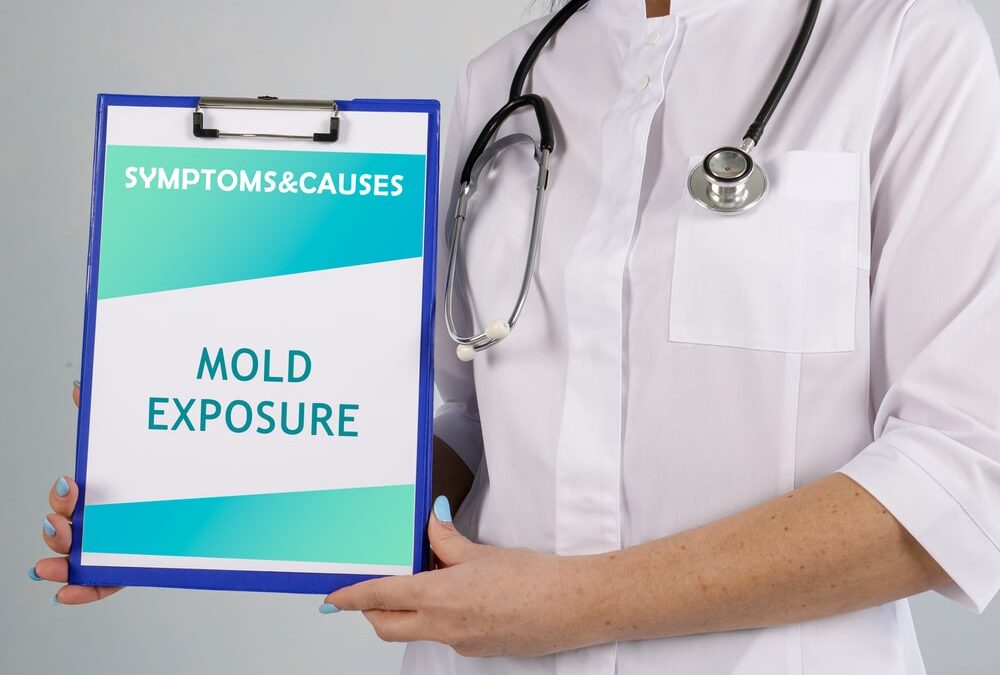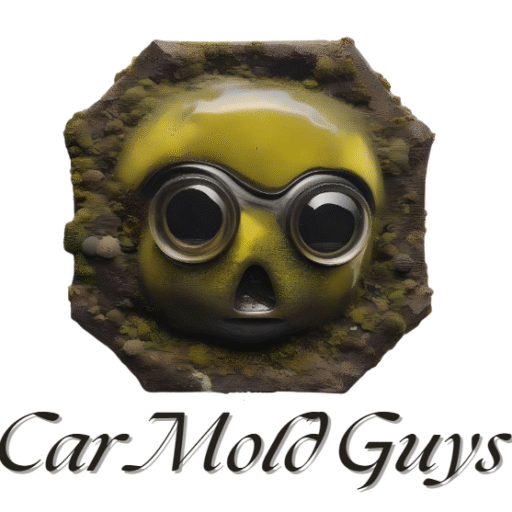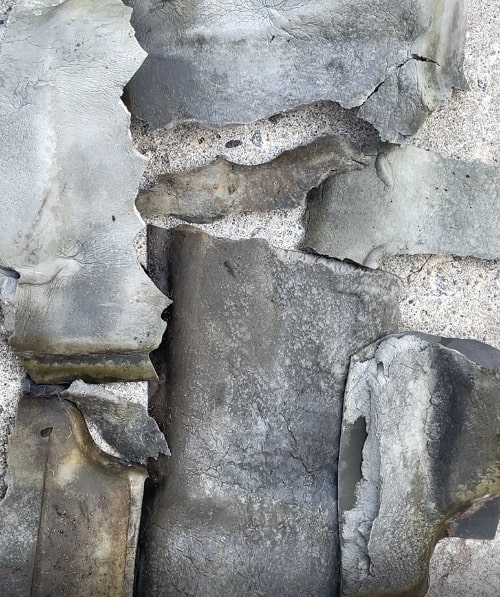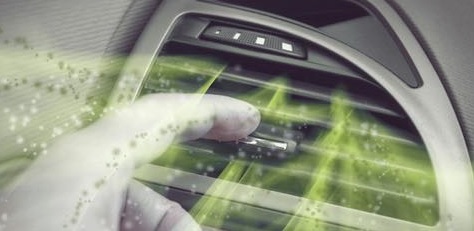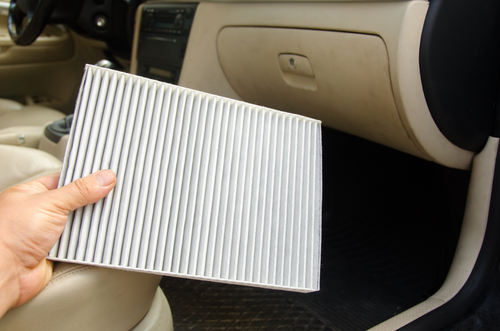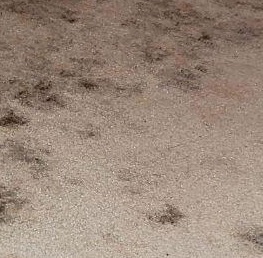Have you ever climbed into your car, only to be greeted by a musty smell that seems to cling to every breath you take? This unsettling experience might be more than just an annoyance. It could be a sign of something lurking beneath your seats and behind your dash: mold.
Is mold in a car dangerous? Beyond the unpleasant odor, there are potential health risks quietly thriving in the enclosed space where you spend hours driving. Mold in cars is a health hazard that can affect everyone on board; spurring allergies, respiratory issues, and more.
By understanding what causes mold to take hold and how it impacts your health, you’re taking the first step toward safeguarding your well-being. Stay tuned to learn how you can tackle this hidden threat effectively.
What Is Mold and How Does It Grow?
Mold is a type of fungus that can be found almost anywhere moisture and organic material are present. In the confined spaces of a car, mold finds the perfect environment to thrive, especially when moisture levels are high and air circulation is low.
Mold reproduces through tiny particles called mold spores, which are light enough to float through the air. When these spores land on damp surfaces, they begin to grow and multiply.
The conditions that encourage mold growth in cars are surprisingly common. Leaks in sunroofs, windows, or door seals can introduce water into the vehicle’s interior.
Additionally, if a car is left stationary with the windows up during hot, humid weather, condensation can form inside, creating an ideal breeding ground for mold. This can happen even more quickly if there are spills on upholstery or carpeting that are not cleaned up promptly.
Is Mold in a Car Dangerous?
Exposure to mold in cars can pose significant health risks, particularly as you spend prolonged periods in these confined spaces. Mold exposure primarily affects the respiratory system, but its impact can vary significantly from one person to another.
For individuals with a mold allergy, inhaling mold spores can trigger symptoms ranging from nasal congestion and sneezing to severe asthma attacks.
Children, the elderly, and those with compromised immune systems or pre-existing respiratory conditions are especially vulnerable. For these groups, the presence of mold can lead to more pronounced and serious health problems.
Respiratory issues may manifest as chronic coughing, wheezing, and difficulties in breathing, which can be mistaken for colds or other respiratory infections.
Beyond allergies and respiratory issues, mold exposure in cars can also cause more subtle health effects. Many people report headaches, dizziness, and fatigue, which they might not immediately attribute to mold.
Moreover, some types of mold produce mycotoxins. These are toxic substances that can lead to health problems when individuals are exposed to them over a long period.
A study conducted by the Environmental Protection Agency underscores the seriousness of indoor air pollution, which includes environments like vehicle interiors, where mold can accumulate in hidden areas. According to their findings, the quality of indoor air can be significantly poorer than outdoor air. This is largely due to pollutants such as mold spores circulating in confined spaces.
Spotting the Signs of Mold in Your Vehicle
Mold in vehicles can be somewhat stealthy, but there are clear signs that can alert you to its presence. Knowing these signs can help you tackle the problem before it affects your health or causes more significant damage to your car.
Visual Clues and Odors
One of the most straightforward signs of mold in a car is the visible growth on interior surfaces, including the seats, floor mats, and dashboard. Mold can appear in a variety of colors, such as black, white, green, or orange, and often looks like a smudge or stain that cannot be easily wiped away.
Another telltale sign is a persistent musty or earthy odor inside the vehicle. This smell is particularly noticeable when the car has been closed up for a period, and the air inside becomes stale.
Hidden Mold
Mold doesn’t always grow in plain sight. Sometimes, you might notice the aforementioned odor without seeing any visible mold. In such cases, it’s essential to inspect more hidden areas where moisture can accumulate unnoticed.
Check under carpets, inside trunks, under seats, and within overhead liners. These are common spots where moisture can collect and mold can flourish away from your immediate view.
Using Your Senses
To effectively check for mold, use both your sense of sight and smell. Begin by looking for any discoloration or unusual stains on fabric and hard surfaces.
Feel the textures. Mold can sometimes be identified by a slimy or fuzzy feel. If parts of your car’s interior feel damp to the touch or if there’s a noticeable dampness in the air, these are signs that conditions are ripe for mold growth.
Additionally, pay attention to any allergic reactions you might experience while in the car, such as sneezing, itchy eyes, or breathing difficulties. These symptoms can be provoked by mold spores circulating in the confined space, especially when the car’s ventilation system is active.
Regular Inspection
Regularly inspecting areas prone to moisture is a key step in preventing mold. During routine cleanings, lift the carpets and mats, check the upholstery, and inspect all nooks and crannies.
If you detect moisture or the beginnings of mold growth, addressing these issues promptly can prevent further spread and safeguard both your health and the interior of your vehicle.
Preventing Mold Growth in Cars
Ensuring your car remains dry is crucial. After heavy use on rainy days or if a spill occurs, take the time to dry out your vehicle’s interior. Use absorbent towels to blot up wet spots, especially in hard-to-reach areas like under the seats and in the corners of the trunk.
For deeper cleaning, consider using a wet-dry vacuum to suck up any excess moisture from carpets and upholstery.
Regular maintenance of your car’s seals is another effective strategy to prevent moisture from getting inside. Check the seals around doors, windows, and the sunroof regularly.
If you notice any cracks or signs of wear, replace the seals as soon as possible. This not only keeps out moisture but also improves the overall insulation of your car, which is essential for maintaining a dry interior.
Good ventilation is vital in preventing mold growth. Whenever possible, leave windows slightly open to allow air circulation, or use your car’s ventilation system regularly to help dry out the interior air.
In humid climates, consider using moisture absorbers or portable dehumidifiers designed for automotive use. These can help reduce the humidity levels inside your car, tackling one of the major causes of mold in a car.
Professional Remediation of Car Mold
When it comes to removing mold from a car, professional remediation is crucial. This process involves more than just a thorough cleaning. It requires specialized knowledge and equipment to ensure that the mold is completely eradicated and unlikely to return.
Initial Assessment
The first step in professional car mold removal is a detailed assessment of the vehicle. Experts thoroughly inspect the car to identify all areas affected by mold.
This usually involves checking under carpets, inside vents, and other hidden areas to determine the extent of the mold infestation.
Moisture Removal
The next step involves eliminating any sources of moisture, which is crucial for stopping further mold growth. This might include repairing leaks or addressing issues with condensation. Professionals use advanced tools to detect moisture levels in various parts of the car to ensure that no damp spots go unnoticed.
Deep Cleaning and Sanitization
Using professional-grade cleaners and disinfectants, the remediation team cleans all surfaces within the car. Special attention is given to porous materials and hard-to-reach spots where mold spores might linger.
This phase often includes the use of HEPA vacuums to remove mold spores from the air and surfaces.
Drying and Dehumidification
After cleaning, the vehicle undergoes a thorough drying process. Professionals use industrial-strength dryers and dehumidifiers to remove all traces of moisture.
Final Inspection and Prevention
Once the car is clean and dry, experts perform a final inspection to ensure no areas have been overlooked. Additionally, they may apply mold inhibitors to surfaces to help prevent future growth. Recommendations are also given to the car owner on how to maintain a mold-free environment moving forward.
Why Professional Remediation Is Necessary
Car mold removal by professionals is not just about immediate mold elimination. It’s about ensuring that the health risks associated with mold are comprehensively addressed.
Mold in cars can cause significant health issues, from allergic reactions to more severe respiratory problems. Professionals not only remove the mold but also treat the conditions that allowed it to grow in the first place, providing a long-term solution to the problem.
Breathe Easy with Professional Mold Removal
We’ve unpacked the risks and realities of car mold by answering the pressing question, “Is mold in a car dangerous?” with a definitive yes.
For those seeking professional and thorough car mold remediation, Lonadier’s Mobile Detailing stands out as a trusted expert. With over a decade of specialized experience and a commitment to quality, our services ensure your vehicle is not just clean but safe.
Don’t let mold compromise your health or comfort. Contact us today and breathe easier knowing your car is in expert hands.
